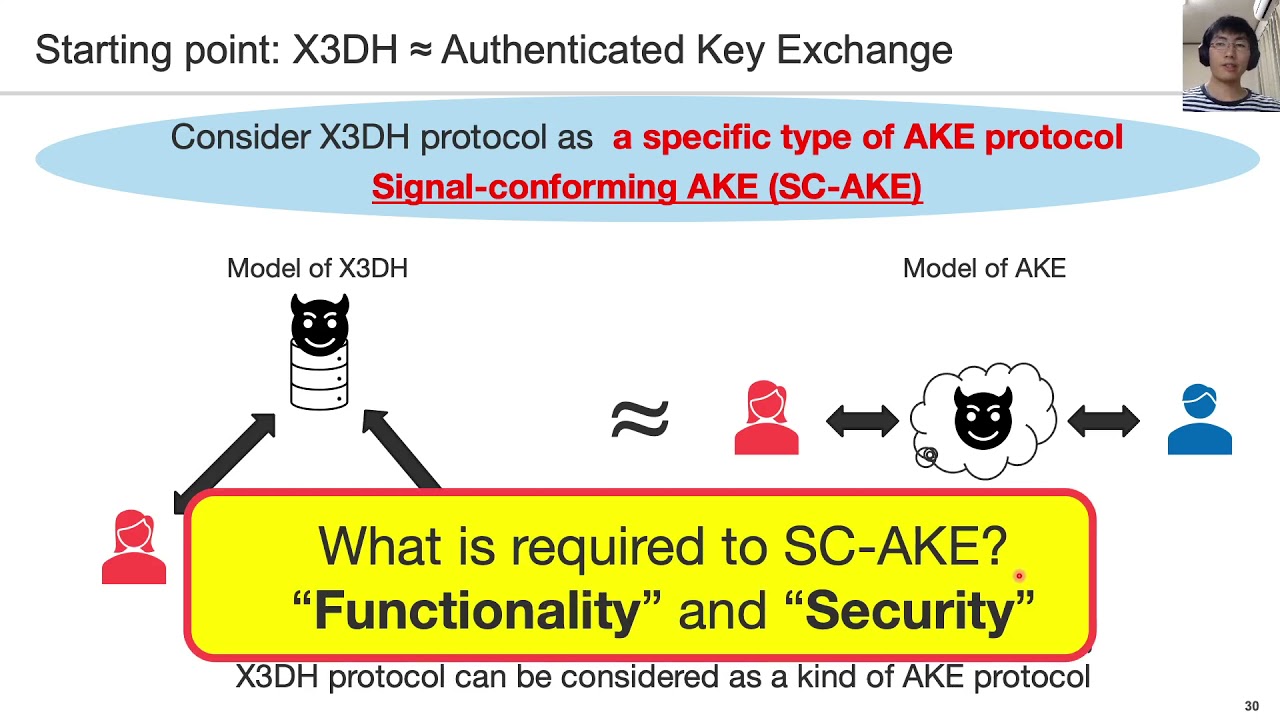Welcome to the resource topic for 2021/616
Title:
An Efficient and Generic Construction for Signal’s Handshake (X3DH): Post-Quantum, State Leakage Secure, and Deniable
Authors: Keitaro Hashimoto, Shuichi Katsumata, Kris Kwiatkowski, Thomas Prest
Abstract:The Signal protocol is a secure instant messaging protocol that underlies the security of numerous applications such as WhatsApp, Skype, Facebook Messenger among many others. The Signal protocol consists of two sub-protocols known as the X3DH protocol and the double ratchet protocol, where the latter has recently gained much attention. For instance, Alwen, Coretti, and Dodis (Eurocrypt’19) provided a concrete security model along with a generic construction based on simple building blocks that are instantiable from versatile assumptions, including post-quantum ones. In contrast, as far as we are aware, works focusing on the X3DH protocol seem limited. In this work, we cast the X3DH protocol as a specific type of authenticated key exchange (AKE) protocol, which we call a Signal-conforming AKE protocol, and formally define its security model based on the vast prior works on AKE protocols. We then provide the first efficient generic construction of a Signal-conforming AKE protocol based on standard cryptographic primitives such as key encapsulation mechanisms (KEM) and signature schemes. Specifically, this results in the first post-quantum secure replacement of the X3DH protocol on well-established assumptions. Similar to the X3DH protocol, our Signal-conforming AKE protocol offers a strong (or stronger) flavor of security, where the exchanged key remains secure even when all the non-trivial combinations of the long-term secrets and session-specific secrets are compromised. Moreover, our protocol has a weak flavor of deniability and we further show how to progressively strengthen it using ring signatures and/or non-interactive zero-knowledge proof systems. Finally, we provide a full-fledged, generic C implementation of our (weakly deniable) protocol. We instantiate it with several Round 3 candidates (finalists and alternates) to the NIST post-quantum standardization process and compare the resulting bandwidth and computation performances. Our implementation is publicly available.
ePrint: https://eprint.iacr.org/2021/616
Talk: https://www.youtube.com/watch?v=VO4fw0UHdMI
See all topics related to this paper.
Feel free to post resources that are related to this paper below.
Example resources include: implementations, explanation materials, talks, slides, links to previous discussions on other websites.
For more information, see the rules for Resource Topics .
